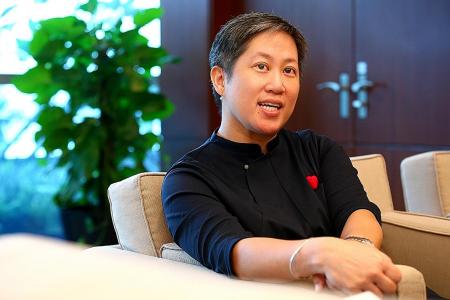Pilot areas in underground masterplan for Singapore to be unveiled in 2019
URA working towards guiding S'pore's development in medium term
An underground masterplan that maps out Singapore's underground spaces is set to unveil pilot areas and their potential uses is set to be unveiled next year.
It will be released as part of the next masterplan guiding Singapore's development in the medium term, said Urban Redevelopment Authority (URA) chief planner Hwang Yu-Ning.
This subterranean masterplan will provide the first comprehensive look at what lies tens and hundreds of metres underground.
Ms Hwang said the URA is working towards having a more complete 3D map of the underground spaces and infrastructure here.
National Development Minister Lawrence Wong told The Straits Times that the Government has to take stock of what is underground, including pipes and power grids.
"We have to take stock and have a good database of information, and are compiling it as a central repository so we have a good basis plan," he said.
In 2013, then national development minister Khaw Boon Wan raised the idea of a plan for Singapore's subterranean development in a blog post.
Ms Hwang, who is also URA's acting deputy chief executive, cited underground oil storage as a way to use underground space and free up surface land.
Already, the Government has made the necessary legislative changes empowering it to acquire stratas of underground space under private land in 2015, paving the way for a future underground metropolis.
NEW ITEMS
The authorities also have to plan for new items at the district and national levels.
Government agencies are already actively pursuing some ideas, including relocating common utilities found aboveground, such as refuse systems, underground.
On Jurong Island, hazardous petrochemical materials are stored in the 130m deep Jurong Rock Caverns, freeing up more than 60ha, or 84 football fields, of space on the island.
But Jurong Island is made up mostly of reclaimed and island land managed under a single agency. Bringing that scale of project to the mainland has far more complications.
Currently, details of what is underground are known only to each relevant agency.
The Energy Market Authority keeps track of where its power grids are laid. National water agency PUB has its own database of its water pipes.
When a developer tries to build underground, it can be difficult to figure out whether there is scope to do so as the information is spread out, said Institute of Real Estate Studies director Sing Tien Foo.
While the URA intends for anyone to be able to see a complete map of what lies underneath, Ms Hwang noted that not everyone can access this information freely due to security concerns.
"If we share too much, we are concerned about the security threat of having unsavoury people use this information.
"We are still thinking how precise and how much information we want to make available to the public," she said.
Get The New Paper on your phone with the free TNP app. Download from the Apple App Store or Google Play Store now



